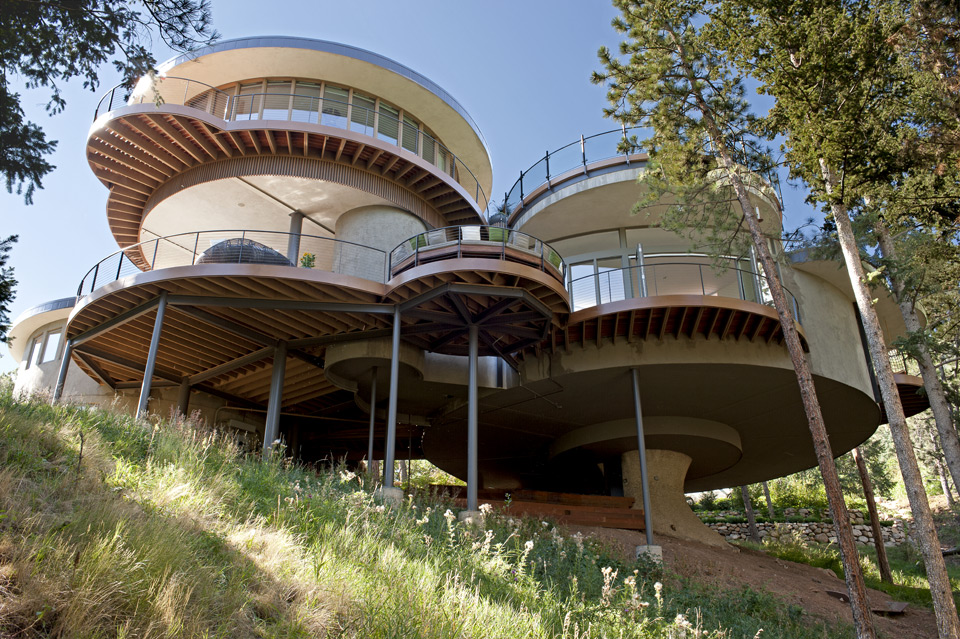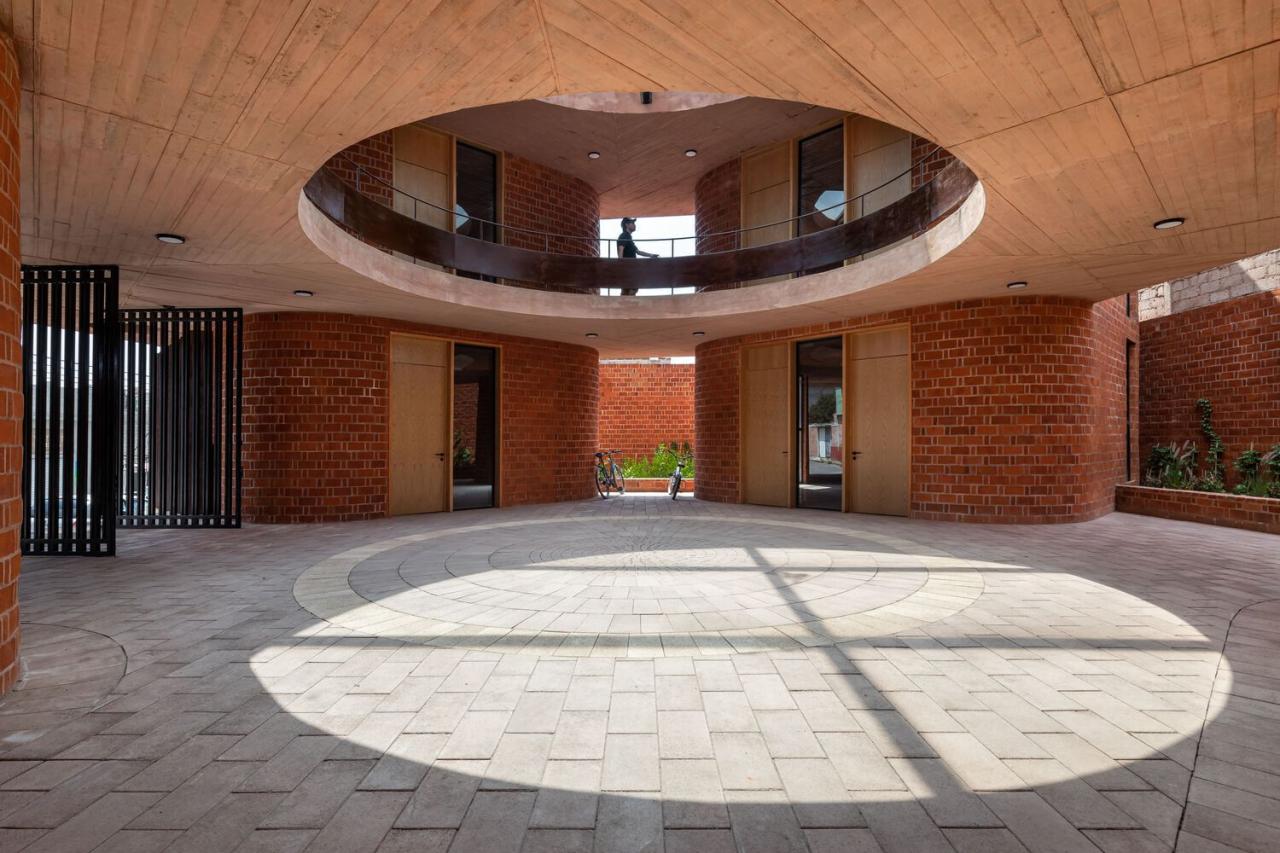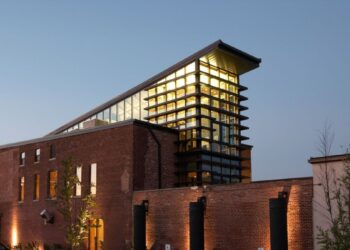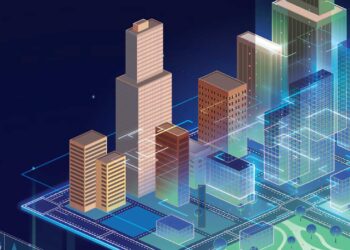For over a century, the construction industry has operated within a linear economic model, a system of “take, make, and dispose.” This approach, which relies on the continuous extraction of finite raw materials and the subsequent generation of massive amounts of waste, is fundamentally unsustainable. The global building sector is a major consumer of resources, accounting for approximately 40% of the world’s energy consumption and a significant portion of its waste. A profound and necessary shift is underway to address this crisis: the adoption of the Circular Economy of Buildings. This revolutionary paradigm redefines the entire life cycle of a building, from its initial design to its eventual end-of-life. This comprehensive article will delve into the core principles of the circular economy in construction, detail its application across a building’s life cycle, showcase the innovative technologies and practices driving this change, and explore the immense benefits and challenges of this transformative new paradigm.
The Linear vs. Circular Model

To appreciate the significance of the circular economy, it’s essential to first understand the limitations of the traditional linear model.
The linear economy is a straightforward, three-step process:
A. Take: The process begins with the extraction of raw materials from the Earth, such as iron ore for steel, limestone for cement, and timber for wood. These resources are finite and their extraction often has significant environmental consequences, including habitat destruction and pollution.
B. Make: The extracted materials are then processed and manufactured into the products and components used in construction, such as steel beams, concrete, glass, and wiring. This manufacturing phase is often energy-intensive and can generate its own waste and emissions.
C. Dispose: At the end of a building’s life, or even during the construction process, these materials are discarded. They are either sent to a landfill, where they remain for centuries, or incinerated, which releases harmful greenhouse gases. This final step represents a massive loss of value and a significant source of pollution.
The circular economy rejects this wasteful process. It is a regenerative system where resources are not just used but are continually reintroduced into the loop. The goal is to maximize the value of materials and products by extending their lifespan, using them in new ways, and recycling them indefinitely, eliminating the concept of waste entirely.
The Three Principles of the Circular Economy in Construction
The application of the circular economy to the building sector is guided by three fundamental principles that shape every stage of a project.
A. Design Out Waste and Pollution: This is the most crucial principle of the circular economy. The vast majority of a product’s environmental impact is determined at the design stage. By designing a building for disassembly and longevity, architects can ensure that its components can be easily taken apart and reused at the end of its life. This means using mechanical fasteners instead of adhesives, standardizing component sizes, and creating a detailed record of every material used. This proactive approach ensures that waste is never created in the first place, or at least that its potential for reuse is maximized.
B. Keep Products and Materials in Use: This principle is about extending the lifespan of a material or product for as long as possible. The hierarchy of a circular economy prioritizes reuse over recycling, as reuse preserves the most “embodied energy”—the energy that was used to produce the material in the first place. This can be achieved through:
- Repair and Maintenance: Designing components that are easy to repair and maintain.
- Adaptive Reuse: Repurposing entire buildings for new functions instead of demolishing them.
- Material Reuse: Salvaging and reusing components like bricks, timber, and steel beams from a deconstructed building in a new project.
- High-Quality Recycling: When reuse is not possible, materials are recycled into a new product of equal or higher quality.
C. Regenerate Natural Systems: The final principle is about making a positive impact on the environment. This means choosing materials that are either from renewable sources or have a carbon-positive footprint, such as timber from sustainably managed forests, which sequesters carbon from the atmosphere. It also means minimizing the use of toxic materials that can harm human health and ecosystems. This principle moves beyond simply doing less harm to actively improving the health of our planet.
The Circular Economy in Practice
Applying the circular economy to a building is not just a single action but a holistic approach that impacts every phase of its existence.
A. Design Phase: The journey begins here. Architects and engineers must design with the end in mind. This involves:
- Designing for Disassembly (DfD): Using modular components and reversible connections to ensure that a building can be taken apart piece by piece.
- Building Information Modeling (BIM): BIM software is an invaluable tool for the circular economy. It can be used to create a detailed digital model of the building that includes information on every material used, its source, and its potential for reuse.
- Material Passports: A material passport is a digital record of all the materials and components in a building. It acts as a permanent record, detailing the materials’ origin, composition, and value, which makes them easier to reuse or recycle at the end of the building’s life.
B. Material Sourcing and Procurement: The choice of materials is critical. A circular building prioritizes:
- Recycled and Upcycled Materials: Using materials that contain a high percentage of recycled content, such as recycled steel and reclaimed timber. Upcycling, which turns waste materials into products of higher value, is also a key strategy.
- Bio-Based and Renewable Materials: Choosing materials from renewable sources, such as cross-laminated timber (CLT), hempcrete, and bamboo. These materials often have a lower embodied energy and a smaller carbon footprint.
- Local Sourcing: Sourcing materials from local suppliers to reduce the carbon emissions associated with transportation.
C. Construction and Operation: During the construction phase, the focus is on waste reduction. This can be achieved through:
- Modular and Prefabrication: Building components off-site in a controlled factory environment reduces waste and improves precision, leading to a more efficient and durable final product.
- Waste Management Programs: Implementing rigorous waste management protocols on the construction site to sort and recycle materials that are not reused.
- Energy and Water Efficiency: Designing and operating the building to be highly energy- and water-efficient, reducing its operational impact on the environment.
D. End-of-Life: This is where the circular model truly shines. When a circular building reaches the end of its life, it is not demolished but deconstructed.
- Deconstruction vs. Demolition: Deconstruction is a careful, manual process of taking a building apart, piece by piece, to preserve its materials for reuse. Demolition, in contrast, is a destructive process that turns a building into a pile of rubble.
- Material Reuse and Recycling: The salvaged materials are either reused in their original form (e.g., bricks, windows, timber) or sent to specialized facilities for high-quality recycling (e.g., steel, concrete, glass). This process ensures that the embodied energy in the materials is not lost but is carried forward into a new project, creating a continuous loop of value.
Key Innovations and Technologies Enabling the Circular Shift

The transition to a circular economy is being accelerated by a number of innovative technologies and practices.
A. Building Information Modeling (BIM): BIM software has become the central nervous system of circular construction. It allows architects, engineers, and builders to create a “digital twin” of a building, where every material and component is tracked and documented. This digital record, or material passport, is a game-changer for the end-of-life phase, as it provides a clear inventory of all reusable materials in a building, making deconstruction and salvage far more efficient.
B. Material Passports and Libraries: The concept of a digital material passport is being expanded into online libraries and databases. These platforms allow architects and designers to search for available reclaimed materials, connecting them directly with deconstruction companies and suppliers. This creates a functioning marketplace for second-hand materials, making it easier to source and use them in new projects.
C. Advanced Recycling and Upcycling: Innovations in recycling technology are making it possible to recycle materials that were previously considered unrecyclable. For example, new processes can separate and recycle different types of plastic, and chemical recycling can break down plastic polymers to their original components, which can then be used to create new, high-quality plastic. Upcycling, which creates a product of higher value from waste, is also a growing field, with examples ranging from turning old jeans into building insulation to transforming plastic bottles into designer furniture.
The Benefits of a Circular Building Model
The adoption of a circular economy in construction offers a wide range of benefits that impact the economy, the environment, and society.
A. Environmental Benefits:
- Reduced Carbon Footprint: By reducing the need for raw material extraction and energy-intensive manufacturing, the circular model can significantly lower the carbon emissions associated with the building sector.
- Less Waste: The core principle of eliminating waste dramatically reduces the amount of construction debris sent to landfills, mitigating a major source of pollution.
- Resource Conservation: By keeping materials in use, we conserve our planet’s finite resources, ensuring they are available for future generations.
B. Economic Benefits:
- New Business Models and Markets: The circular economy is giving rise to a host of new business models, including companies that specialize in deconstruction, material reclamation, and the production of recycled and bio-based materials.
- Cost Savings: While the initial cost of some circular materials can be higher, the long-term benefits of reduced waste disposal fees, lower operational costs through energy efficiency, and the potential to sell materials at the end of a building’s life make the model economically viable.
- Increased Asset Value: A building with a circular design and material passport is a more valuable asset. Its future reuse potential and its sustainable credentials make it more attractive to investors and tenants, commanding a higher market value.
C. Social Benefits:
- Job Creation: The deconstruction and material reclamation industries are labor-intensive, creating new jobs in the local economy.
- Healthier Built Environment: By prioritizing non-toxic materials and clean production, the circular economy helps to create a healthier built environment for workers and occupants.
Challenges and the Future
Despite its immense promise, the circular economy of buildings is still in its early stages and faces several challenges.
A. Initial Cost and Market Immaturity: Many sustainable and recycled materials are not yet produced at scale, which can make them more expensive than conventional materials. The market for reclaimed materials is also still nascent and can be difficult to navigate.
B. Regulatory and Logistical Hurdles: A lack of standardized regulations and building codes for circular materials can be a major barrier. The logistics of deconstructing a building and transporting salvaged materials also present a complex set of challenges.
C. Changing Mindsets: The biggest hurdle is a cultural one. For decades, the industry has been conditioned to think in a linear fashion. The shift to a circular mindset requires a fundamental change in how architects design, how builders construct, and how owners manage their assets.
Conclusion
The circular economy of buildings is not a temporary trend; it is the inevitable future of a responsible and sustainable construction industry. Instead of a one-way street from production to landfill, the circular model envisions a closed-loop system where materials are kept in use for as long as possible, waste is eliminated, and natural systems are regenerated. This is not merely an ethical choice but an economic and environmental imperative, promising to unlock new opportunities for innovation, efficiency, and long-term sustainability. By redesigning our approach to building from the ground up, we can create a built environment that is not just a consumer of resources but a regenerative force for the planet.










Discussion about this post